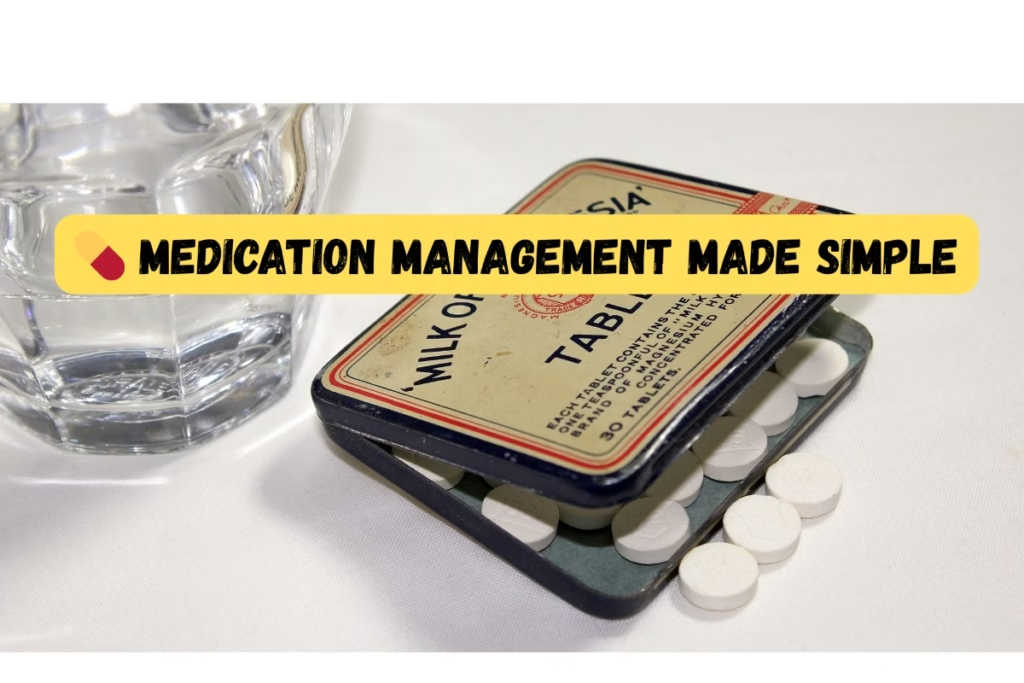Sarah, staring at the clock, took a deep breath.
It was almost time for the first caregiver-family meeting.
The pressing weight of discussing her aging mother’s needs sat heavily on her chest.

Image by Kevin Phillips from Pixabay
Caring for our aging loved ones isn’t a one-person show. Often, it’s a symphony that requires multiple instruments playing in harmony.
Caregiver family meetings serve as the conductor of this orchestra, directing all involved towards unified goals for the senior’s well-being.
For the best outcomes, there are 5 crucial components to consider for effective caregiver-family meetings:
1. Assembling the Right Care Team: Who Makes the Cut?
Determine the stakeholders.
Cast a wide net when considering who should be present at such vital meetings. Not only immediate family members like siblings but extended relatives such as aunts, uncles, and cousins have insights and roles to play in senior care.
The decision wasn’t just about duty; it was personal for Sarah. She invited her two brothers, understanding the shared responsibility they held.
But she didn’t stop there. Recognizing the special bond her teenage niece shared with grandma, especially during their cherished weekend visits, Sarah believed her perspective was invaluable.
In caregiving, every voice, every memory, and every interaction can shape the best care strategy.
2. Charting the Path: Crafting an Agenda and Choosing the Venue
The notion of a “meeting” has evolved in today’s interconnected world. Whether congregating physically or linking up digitally, what remains unchanged is the necessity of a guiding framework.
Before diving into the substance of your caregiver family meeting, ensure everyone is aligned.
Sarah realized that not all family members could be present physically.
Given work commitments, geographic distances, or current health guidelines, she considered video conferencing as an alternative, ensuring that everyone could participate in person or remotely.
This inclusive approach meant that voices, even from miles away, could be part of the collective decision-making.
But before any discussions began, Sarah had taken the time to circulate a detailed agenda well in advance.
This preemptive move had multiple benefits. Firstly, it allowed attendees to be mentally prepared, reflecting on items to be discussed. Secondly, it gave them the space to gather any pertinent information or potential solutions they wanted to share.
The meeting itself started with a heart-to-heart. Sarah led everyone down a nostalgic path, weaving tales of their mother’s pivotal role in the family tapestry.
This strategy served two purposes: it reignited their collective bond. Also, it underscored the importance of their mission — to offer their mother the care she truly deserved.
With emotions grounded and the agenda at hand, the conversation seamlessly transitioned to more tangible matters.
Through a mix of remote and in-person engagement and guided by a well-thought-out plan, Sarah ensured that the meeting was not just another family get-together but a constructive platform geared toward a noble cause.
3. Navigating the Gathering: Addressing Family Dynamics
Every family is a complex tapestry of personalities, histories, and individual expectations. For a meeting like this, recognizing and navigating these dynamics is paramount.
Here’s how Sarah managed:
Laying the Groundwork
Sarah emphasized the importance of open dialogue before diving into the specifics. She encouraged everyone to voice their thoughts and reminded them of the need for mutual respect and understanding.
Addressing sensitive topics requires care and empathy, so Sarah’s first goal was to create a safe space where everyone felt valued.
Agenda Unveiled
With the emotional foundation set, she presented the pre-circulated agenda, covering vital areas such as roles and responsibilities, financial contributions, updated medical details, and essential legal documents.
By doing so, she ensured that the meeting had structure and focus.
Distributing Roles and Responsibilities
In Sarah’s family, it became evident that certain members had natural inclinations or expertise in particular areas.
Her eldest brother, with a medical background, naturally took the reins regarding health-related discussions. Having spent considerable time with their mother, Sarah was best equipped to discuss daily living needs.
However, while individuals took leads in specific segments, decisions were always a collective effort.
Embracing Open Communication
Sarah made a concerted effort to foster open discussions throughout the meeting. She allowed for pauses, allowing others to chip in with their perspectives or raise any concerns.
This ensured that the dialogue wasn’t dominated by one voice but was a genuine ensemble of varied inputs.
Respectful Interactions
Given the emotional weight of caregiving, it was inevitable that opinions would differ. Sarah emphasized the need for respectful language.
She championed active listening, ensuring participants responded to ideas without immediate judgment.
Clarity and Commitment
By the end of the discussion, each member clearly understood their role. More importantly, there was a shared commitment to regular follow-ups.
Sarah proposed monthly check-ins to discuss progress, address new challenges, and tweak responsibilities if needed.
In essence, Sarah’s meeting was a microcosm of ideal family dynamics. It was organized yet empathetic, structured yet inclusive, and above all, aimed at the collective welfare of their loved ones.

Image by Ben Kerckx from Pixabay
4. Navigating Hurdles: Anticipating and Addressing Divergent Views
The road to consensus can be riddled with hitches. Every family is a unique blend of personalities, histories, and viewpoints, making the unanimous agreement a tall order.
Foreseeing Discrepancies
Even before the meeting, Sarah knew that her family, like all others, had different perspectives.
She approached the gathering not to avoid disagreements but to address them constructively.
Concrete Situations
For instance, Sarah’s younger brother strongly preferred hiring a professional caregiver. His arguments were rooted in his concern for consistent medical attention and specialized care.
On the other hand, Sarah believed in the emotional healing that a familiar face, especially a family member’s, could offer. She felt their mother would thrive in an environment of familial love and personal care.
Mediating Differences
Instead of letting this disagreement escalate, Sarah suggested a compromise.
Perhaps they could consider a hybrid approach—hiring a professional for specific medical needs while ensuring a family member was always around for emotional support.
External Consultation
In instances where a middle ground seemed elusive, Sarah believed in seeking external counsel.
Consulting with medical professionals or caregiving experts could offer an unbiased perspective and help bridge gaps.
Creating an Atmosphere of Understanding
Sarah reiterated the importance of empathy throughout the discussion. It was essential for family members to understand that each perspective, while different, stemmed from a shared concern for their mother’s well-being.
By acknowledging these challenges and treating them as areas for collaboration rather than contention, Sarah turned potential obstacles into opportunities for deeper understanding and stronger family bonds.
5. Crafting Collaborative Outcomes: Balancing Needs and Preferences
Central to these caregiver discussions is the overarching goal: the welfare and happiness of the senior in focus.
Reaching resolutions often requires a blend of practicality and compassion.
Prioritizing the Senior’s Needs
Any decision should continuously loop back to the primary question: “Is this in the best interest of our senior loved one?”
Sarah continually emphasized this point, ensuring the conversation never strayed from its primary purpose.
Incorporating Varied Input
Recognizing each family member’s unique perspective was pivotal.
For instance, Sarah’s niece highlighted the importance of weekend family bonding, suggesting activities that could help invigorate their grandmother’s spirits.
Balancing Professional and Personal Care
Considering their collective insights and concerns, Sarah’s family arrived at a harmonious solution.
They agreed to engage a professional caregiver during the weekdays, ensuring specialized care and medical attention. But they also saw the irreplaceable value of familial love.
Hence, weekends were earmarked for shared family caregiving, allowing for personal bonding, shared memories, and a sense of home for their mother.
Flexibility in Approach: Sarah also knew that what works now might need adjustments later. She championed an adaptable stance, urging regular check-ins to re-evaluate the care plan.
By focusing on shared objectives and being receptive to diverse viewpoints, Sarah and her family crafted a strategy that catered to both their mother’s immediate needs and her emotional well-being.
Mid-meeting, a tense silence fell as the topic of financing the care surfaced.
Sarah’s younger brother, David, voiced concerns about using their savings. In contrast, her elder brother, Mike, believed they should spare no expense. Their differing financial philosophies threatened to fracture the unity.
It was a teetering tower of concerns, emotions, and stakes.
Resolution:
Through hours of discussion and compromise, the siblings agreed on a financial strategy to provide the best care without undue strain. Yet, as Sarah looked around the room, she could sense not all concerns were laid to rest.
Some issues, she realized, might take more than one meeting to solve.
Caregiver-family meetings are pivotal in streamlining senior care. It might feel like navigating a maze with many turns and crossroads. Still, with patience and understanding, a middle ground is always in sight.
While Sarah’s meeting had its ups and downs, it highlighted the importance of open dialogue and collaboration.
And though not every concern was resolved, the path forward became clearer.



